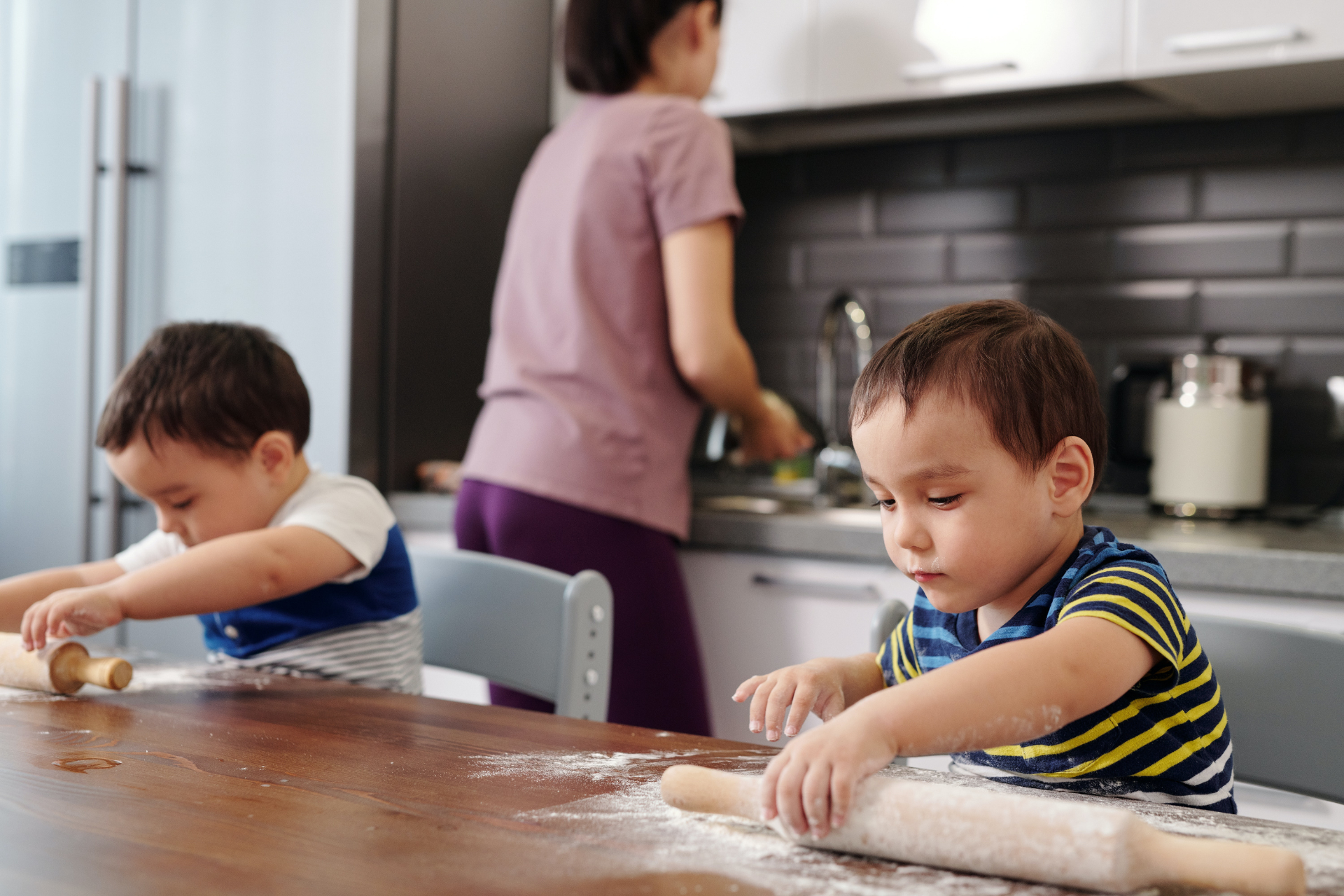
The Montessori Method recognizes the importance of children having experiences that allow them to probe, discover, create, and learn. However, as the weather gets colder, staying active and engaged in learning can be difficult. With physical and mental energy bottled up, kids often begin to struggle with focusing and can become a little stir-crazy! You can keep your preschoolers occupied while at home this winter season with Montessori-inspired activities. North American Montessori has compiled a list of developmentally appropriate activities that focus on practical life, language, culture, sensorial, and math.
Winter Practical Life Activities
The area of practical life focuses on learning to care for oneself and their environment. These real-life activities help children feel comfortable and interact appropriately and productively. Winter-themed practical life activities include:
- Scraping ice from the window pane – Inviting your children to help you with a household chore will give them a sense of purpose. Scraping ice from the window pane is a great way to get them involved in caring for the house this winter.
- Scrubbing boots – Many preschoolers enjoy cleaning because it provides them with tangible results. Having your child scrub the snow and slush off of boots may actually be fun for them!
- Learning how to put on winter gear – One of the best ways to have children learn to care for themselves is by getting ready to venture out into the cold. Getting bundled up in snow pants, boots, coats, mittens, and scarves is the perfect opportunity to encourage your child’s independence.
- Helping in the kitchen – This teaches toddlers a range of basic life skills that we all need. Smell, sight, sound, taste, and touch are all used when you bake or make winter-themed snacks. You can also incorporate counting and measuring into the kitchen activity!
Winter Language Activities
In the Montessori Method, the area of language is designed to give children a sensorial impression of how language works. It offers context for their environment, helps them develop a well-rounded vocabulary, and communicate with others. Winter-inspired language activities include:
- Nomenclature cards for common winter vocabulary – Cards with pictures of winter items printed on them and the real-life item can work well for early-stage children to match. Older children can use 3-part-cards, which include a picture card, a label card, and a card with both the picture and word to check their answer after. They can build matching and memory skills while expanding their vocabulary as they match cards with pictures of winter clothing, winter animals, and winter activities with the corresponding vocabulary card.
- Sequencing cards for winter activities – This introduces children to the concept of logical sequence. Have them put the steps for winter-specific activities in order, such as getting dressed in winter gear, making a snowman, and making hot chocolate.
- Winter word tracing cards – This is a fun and easy way for children to practice handwriting and build pre-writing skills, including proper pencil grip, drawing, coloring, and copying – all while making connections between winter images.
Winter Cultural Activities
This area of learning helps your child explore the world around them and understand their own significance in it. Montessori cultural activities often focus on people, terrain, and animals. Children gain an appreciation and respect for differences while learning that all beings are fundamentally related. Winter cultural activities include:
- Making bird feeders for winter birds
- Observing and recording the activity of winter birds and animals
- Look for animal tracks in the snow
- Learning about what animals do in winter
- Learning about how ice is formed
- Making paper snowflakes and other winter artwork and crafts
- Painting snow – This can be an outdoor or indoor activity. Outdoors, you can fill small squirt bottles with a few drops of food coloring and let your little one create a colorful masterpiece in the yard. Bring a container filled with snow inside for indoor snow painting and have your preschooler use a paintbrush and watercolor paints. If you have them make a multi-colored snowball, this activity doubles as a great sensory experience!
- Snow melting science experiment – Melting snow makes for a fun science experiment and cool sensory play activity. Let your preschooler collect snow and put it in a small container. Ask them how long will it take to melt? What might be in the snow when it melts? What do they notice about the debris in the melted snow? Can they identify any of it? This activity can also serve as a lesson in not eating snow!
Winter Sensorial Activities
The sensorial area puts an emphasis on learning through the senses. Children study, understand, and classify the things around them in order to organize and adapt to their environment.
- Making a sensory bin, bottle, bag, or tray – Fill a container of your choosing with ice or snow and have your child close their eyes, reach in, and describe what they’re feeling. Try putting winter-themed toys and items from around the house into the container and have your child try to guess what the objects are.
- Making DIY fake snow – All you need is 1 part baking soda and 1 part cornstarch. Add water, one tablespoon at a time, mixing with your hands. Keep adding water and mixing until the mixture can just hold its shape when squeezed. Once the fake snow clumps up, give it to your preschooler and challenge them to make a snowball or mini snowman and discuss the differences between real and fake snow!
- Playing in the real snow outside – This will definitely help your preschooler use some of that pent-up energy! You can help them build a snowman or have them write letters in the snow. Feeling the different textures while forming letters helps them make connections they won’t forget.
Winter Math Activities
Montessori math introduces preschoolers to mathematical concepts and helps develop a young child’s mathematical mind. Developing early numeracy skills allow children to better absorb, classify, and order the things in their environment.
- Counting with buttons or “snowflake” pom poms – Write numbers on pieces of paper and place them in a muffin tin. Have your child count out buttons, pom poms, mini marshmallows, cotton balls, or other manipulatives (the possibilities are endless) and put them with the corresponding numbers in the muffin tin. Add in tweezers to get even more fine motor practice!
- Winter-themed math activities – Use mathematical concepts such as counting, number recognition, one-to-one correspondence, numerical order, sorting, and measuring.
Contact Our Montessori Daycare Center
We at North American Montessori are committed to providing the right tools for parents and caregivers to continue to nurture their children’s Montessori learning outside of our early childhood education centers.
To learn more about Montessori childcare, contact us!
Schedule a visit today!

